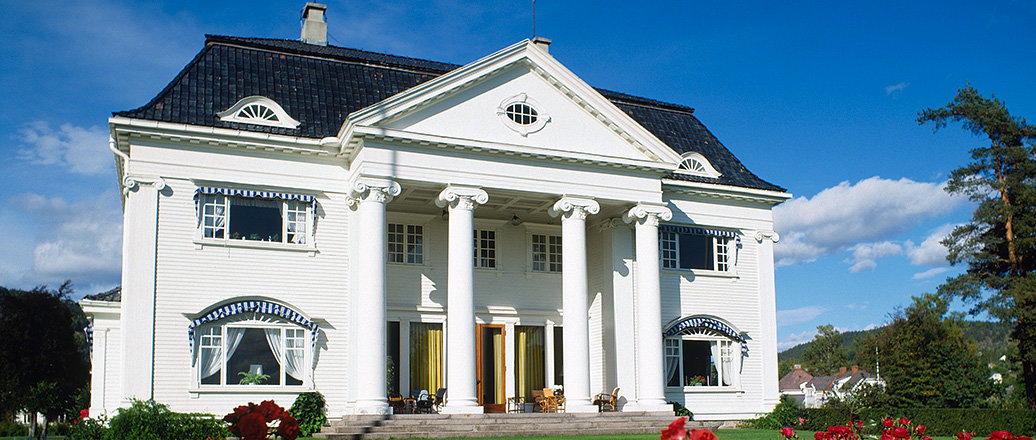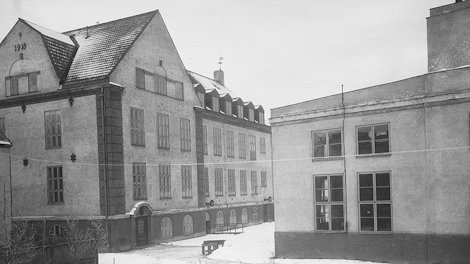They are often called "adminis", from their use in their early days in the administration and management of the company, particularly in connection with promoting its development. The administration centre at Notodden was built in 1906. It is an impressive building and modern for its time.
But it was not the local community that Hydro’s managing director, Sam Eyde, had in mind when he asked the well-known architect Henning Kloumann to design the first ”admini” at Notodden.
Entertainment and inspiration
The house was built mainly with a view to entertaining investors and visitors from other countries. They arrived by horse-drawn carriage or in spluttering new-fangled motor cars. Some travelled by river to see the company’s industrial developments on the way and decide whether this was a venture worth investing in. Eyde used the building as his office when he was in Notodden, and took full advantage of it to foster loyalty and inspire his employees.
The “admini” at Notodden was also the obvious venue for Hydro’s annual general meetings for the first 55 years of the company’s life. But from 1960, when the new main office was ready in Oslo, and the number of shareholders had begun to increase, the annual general meetings moved to Oslo.
Backdrop to tough negotiations
The house provided a propitious backdrop to important board meetings, as well as tough negotiations – purchases and sales – expansions and sometimes cut-backs. It is built in the classical style and decorated with wood carvings by Jon Borgarson.
The almost 100-year old house is still impressive, its white-painted facade standing out in attractive rural surroundings close to the town. At the time it was built, it must have made an enormous impression in a country where fine mansions were a few and far between.
The company went on to build similar villas at both Rjukan and Herøya. The “admini” at Rjukan was designed by Thorvald Astrup and is listed as one of the finest wooden buildings in the Jugend style in Norway.
Several other factory sites in Norway acquired guest houses. They range over a wide variety of styles, from Eyde’s white mansion at Notodden – locally known as “Chateau Eyde” to the plain, simple customs house at Karmøy near Haugesund on the west coast.
Quite different again is Frierstua, a log house probably built in the 1700s, by the beach on Frier fjord, not far from the petrochemical plants at Rafnes.
Høyevarde lighthouse
For history enthusiasts however, none of these measure up to Høyevarde lighthouse and customs post close to Hydro’s aluminium plant at Karmøy, an island known from the Norwegian sagas. Høyevarde is even mentioned in British history books, as the place where the Earl of Bothwell, lover of Mary Stuart, was imprisoned after his flight from Scotland. The lighthouse has not been lit for 100 years, but lives on, together with the customs post, as Hydro Aluminium’s guest house.
In the visitors books for these guest houses, we find the signatures of royalty and other dignitaries: the Norwegian kings Haakon, Olav and Harald, Queen Margrethe of Denmark and Queen Sonja of Norway, the Shah and Empress of Persia, King Chulalongkorn of Siam - and Nikita Khrushchev from the Soviet Union.
Some of these buildings have also witnessed drama during the second World War.
Updated: August 18, 2020




